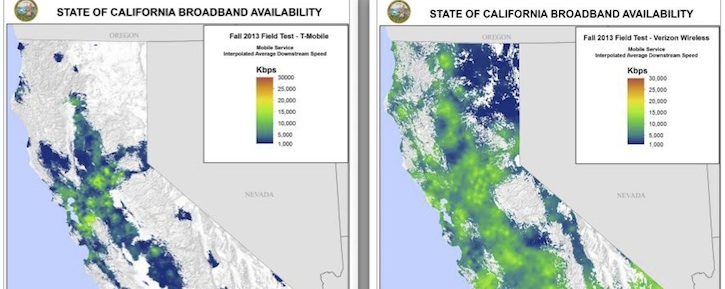Cellular data services are sometimes fast but always inconsistent. Occasional bursts of good performance skew averages based on measurements taken over periods of time, building false expectations of the speed and performance consumers will actually get. That’s one of the conclusions reached in an analysis done for the California Public Utilities Commission, based on millions of field tests conducted at thousands of locations throughout the state (H/T to Jim Warner for the pointer).
Nearly everyone in California – 98% of the population – would have access to the CPUC’s minimum standard of service (6 Mbps down/1.5 Mbps up), if carrier claims and sporadic speed spikes are taken at face value. But the CPUC’s analysis shows that doesn’t match reality…
The mean normalized standard variation can vary from as little as 25% for an urban Verizon user to as much as over 100% for a rural T-Mobile user. Rural users can expect to see much more variability in their service than urban users….
Lowering the mean speeds down by one standard deviation is necessary to approximate what most consumers can expect from their mobile service most of the time.
In real world terms, applying a variability discount to the raw data means that only 64% of Californians can get an adequate level of service from mobile carriers, leaving 36% out in the cold. Looked at in terms of land area, the story gets even worse. 66% – just about two-thirds – of the state does not have mobile data service that meets the minimum standard.
Many Californians have access to high quality mobile broadband service – the report notes that “mobile broadband, at its best, has gotten much better VERY quickly, on average”. But more than a third of the people in California and two-thirds of the land area see cellular data service at its worst.

